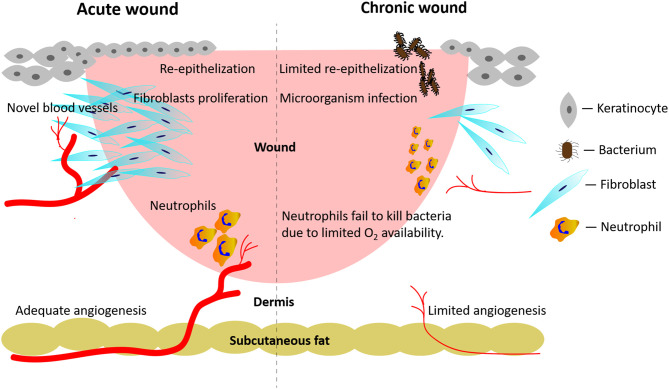Figure 1.
Pathological mechanisms active in acute wounds and chronic wounds, respectively. Acute wounds (Left Side): an adequate angiogenesis promotes re-epithelialization, fibroblasts' proliferation, and neutrophils' anti-infection activities. Chronic wounds (Right Side): persistent local bacterial infections hinder the formation of novel blood vessels. In turn, the restricted angiogenesis hampers fibroblasts' proliferation and the neutrophils' anti-infection activities.

